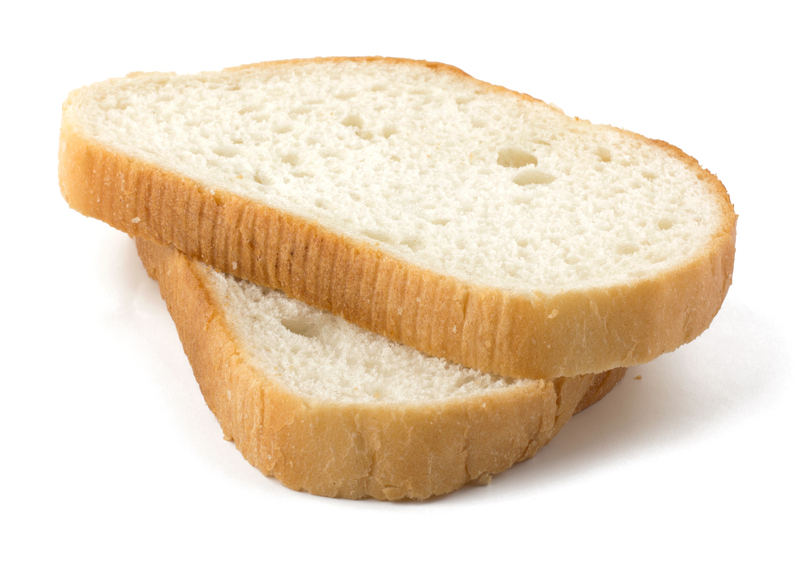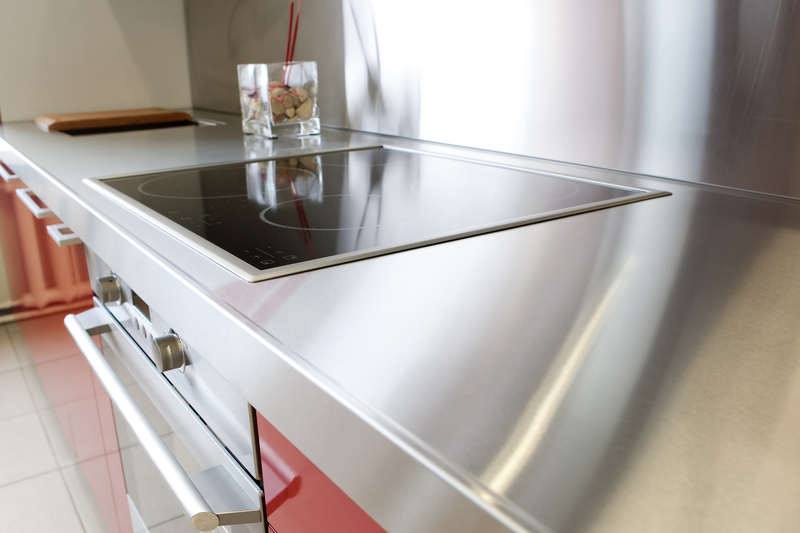Create a Mold-Free Sanctuary in Your Bathroom
Posted on 25/06/2025
Create a Mold-Free Sanctuary in Your Bathroom: Your Comprehensive Guide
Are you tired of seeing mold and mildew invading your bathroom? You're not alone. Bathrooms are notorious for attracting unwanted mold due to their high humidity and frequent water exposure. If you dream of a refreshing, healthy, and mold-free space, this guide is your go-to resource.

Why Focus on a Mold-Free Bathroom?
Mold in your bathroom isn't just unsightly--it can also pose serious health risks! Mold spores aggravate allergies, trigger asthma attacks, and may even cause chronic respiratory problems over time. Plus, mold gradually degrades surfaces, leading to costly repairs and renovations.
- Improved Indoor Air Quality: A mold-free sanctuary ensures you breathe cleaner, fresher air.
- Prolonged Bathroom Life: Preventing mold saves your tiles, paint, and plumbing from unnecessary deterioration.
- Enhanced Appearance: Keep your sanctuary looking spotless and inviting all year round.
The Culprits: Why Does Mold Thrive in Bathrooms?
Before tackling mold, it's important to know why bathrooms are a mold magnet:
- Warmth: Hot showers create a cozy environment where mold thrives.
- Moisture: Frequent splashing and high humidity provide ideal breeding grounds.
- Poor Ventilation: Steamy air without adequate circulation gets trapped, promoting mold growth.
- Organic Material: Dust, soap scum, and even grout can feed mold spores.
Step-by-Step: Transform Your Bathroom into a Mold-Free Sanctuary
Step 1: Combat Excess Moisture
The key to a mold-free bathroom is simple: control moisture. Start by reducing humidity and ensuring water doesn't linger where it shouldn't.
- Use a Reliable Bathroom Fan: Switch the fan on during and after showers for at least 20-30 minutes.
- Open a Window: Natural ventilation helps dry out the air quickly.
- Wipe Down Wet Surfaces: Make it a habit to towel off walls, shower doors, and sinks after use.
- Fix Leaky Fixtures: Dripping faucets or pipes encourage constant dampness--address these immediately.
- Install a Dehumidifier: In windowless bathrooms, a small dehumidifier works wonders to keep humidity at bay.
Step 2: Choose Mold-Resistant Materials and Finishes
Design your sanctuary with materials that naturally resist mold:
- Mold-Resistant Paint: These paints include additives that block mold growth, perfect for bathroom walls and ceilings.
- Ceramic or Porcelain Tile: Hard, non-porous tiles repel water and are easy to clean--a win-win!
- Waterproof Grout: Sealed or epoxy-based grout prevents water from seeping in and feeding mold colonies.
- Solid Surface Countertops: Choose non-porous surfaces like quartz or acrylic for sinks and vanities.
Step 3: Ventilate, Ventilate, Ventilate!
Proper air flow is vital to a mold-free bathroom sanctuary. If your bathroom is windowless, an efficient exhaust fan is non-negotiable. For extra protection:
- Leave the Door Open: Let in fresh air whenever possible--especially after hot showers.
- Keep Shower Curtains Open: Closed curtains trap moisture; open them to allow quicker drying.
Step 4: Eliminate Hidden Reservoirs of Moisture
- Check for Hidden Leaks: Inspect under sinks, the base of toilets, and behind bathtubs for signs of water damage or soft spots.
- Declutter Shower Shelves: Bottles, sponges, and loofahs can harbor mold--clean and dry them regularly.
- Elevate Rugs and Mats: Frequently wash bathmats, and avoid letting them stay damp for long.
Step 5: Regular and Effective Cleaning Routine
Consistent cleaning will keep mold at bay:
- Scrub Grout and Tiles: Use a mixture of vinegar and water or a specialized cleaner weekly.
- Clean Shower Curtains: Machine wash fabric curtains every few weeks, and disinfect plastic liners with a bleach solution.
- Empty Trash Cans Regularly: Trash often attracts moisture and bacteria--don't let it build up.
Expert Tips: Maintaining Your Mold-Free Sanctuary
Keep Humidity Levels in Check
Did you know? The recommended indoor humidity level is between 30% and 50%. Install a digital humidity sensor to monitor your bathroom. If the level rises, use your fan, open windows, or deploy a dehumidifier.
Seal Every Surface
- Seal Grout Lines: Once a year, apply a grout sealer to shower, floor, and backsplash grout to create a barrier against water.
- Caulk Joints and Edges: Check the caulking around tubs and sinks every six months. If you spot cracks or peeling, re-caulk immediately--these gaps let water in, encouraging mold growth.
Upgrade to Mold-Fighting Fixtures
- Touchless Faucets and Soap Dispensers: These reduce the spread of germs and prevent water pooling around sink bases.
- Water-Resistant Lighting: Light fixtures rated for wet areas won't deteriorate or foster mold on their surfaces.
Quick-Response Cleaning Protocol
- Act Fast! Spot a suspicious patch? Clean it immediately to prevent it from spreading.
- Disinfect Deeply: Use diluted bleach, hydrogen peroxide, or commercial mold removers for stubborn cases. Always wear gloves and ensure good ventilation.
Natural Remedies: Eco-Friendly Mold Solutions
Prefer chemical-free cleaning? For a greener approach to a mold-free bathroom sanctuary, try these options:
- Vinegar: Undiluted white vinegar in a spray bottle kills 82% of mold species. Spray, let sit for an hour, then scrub and rinse.
- Baking Soda: Mix with water to form a paste for gentle cleaning of tiles and grout.
- Tea Tree Oil: Add 1 teaspoon of tea tree oil to 1 cup of water, spray on affected areas, and leave without rinsing for its antifungal properties.
Mistakes to Avoid in Your Quest for a Mold-Free Bathroom
- Ignoring Early Signs: Small spots or persistent musty odors are early warnings--don't overlook them.
- Avoid Overcrowding: Excess products and clutter restrict air circulation, trapping moisture.
- Neglecting Hidden Areas: Don't forget backs of toilets, windowsills, shower curtains, and even toothbrush holders.
- Using the Wrong Cleaners: Ammonia-based or abrasive cleaners can damage surfaces and leave them more susceptible to mold.

FAQs: Mold-Free Bathroom Sanctuary
How can you tell if your bathroom has hidden mold?
Watch for a persistent musty odor, peeling paint, discolored caulk or grout, and unexplained allergies or coughing. Use a flashlight to check shadowy corners, under the sink, and inside ventilation grills.
Is it safe to remove mold yourself?
If the affected area is smaller than 10 square feet, safe DIY cleaning is possible. For severe or recurring infestations, call a professional mold remediation specialist for help.
How often should you clean your bathroom to keep it mold-free?
Wipe down surfaces daily, and do a deep clean every one to two weeks focusing on tiles, grout, and hard-to-reach spots.
The Long-Term Payoff: Health, Comfort, and Value
Creating and maintaining a mold-free sanctuary in your bathroom preserves your home's value and enhances your quality of life. By adopting moisture management strategies, investing in resistant materials, and sticking to a robust cleaning schedule, you'll enjoy:
- Fewer Allergies and Respiratory Issues
- A Long-Lasting, Beautiful Bathroom
- Greater peace of mind knowing your sanctuary is clean and healthy
Transform your bathroom into a true retreat where health and relaxation go hand in hand. Start implementing these mold-fighting tips today and experience the difference a mold-free sanctuary can make!



